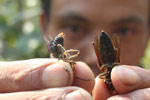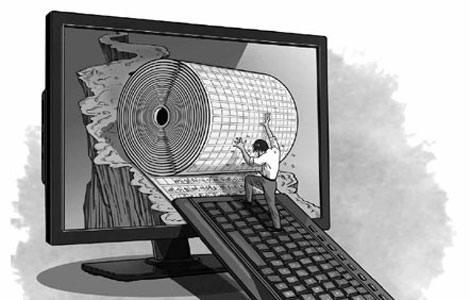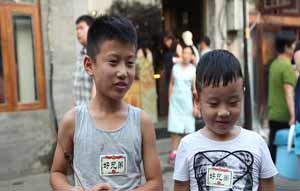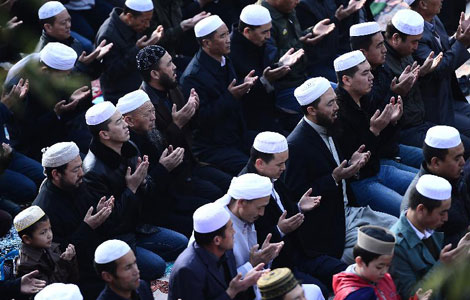Typhoon Wipha threatens Japan
Updated: 2013-10-16 13:28
(Agencies)
|
|||||||||||
TOKYO - Eight people were killed and over 30 missing, with nearly 20,000 people ordered to evacuate and hundreds of flights cancelled as Typhoon Wipha pummelled the Tokyo region on Wednesday, leaving piles of wreckage on one small island but largely sparing the capital.
Operators of the wrecked Fukushima nuclear power plant north of Tokyo pumped rainwater out of protective containers at the base of some 1,000 tanks storing radioactive water, and were taking other precautions, as the typhoon brushed past Tokyo and moved up Japan's Pacific coastline.
Seven people were found dead on Izu Oshima island, about 120 km (75 miles) south of Tokyo, after rivers overflowed and the storm set off mudslides along a 2 km (1.2 mile) swathe of mountains. Television footage showed roads clogged with heaps of wreckage and houses with gaping holes.
One woman was swept away by a swollen river in western Tokyo and 37 people were missing, the Japanese government said, including two schoolboys engulfed by mammoth waves on a beach. About 20 people suffered minor injuries from falls and being struck by flying objects such as roof tiles.
"I heard a crackling sound and then the trees on the hillside all fell over," a woman on Oshima told NHK national television. "Then mud slid as far as the house."
The storm brought hurricane-force winds and drenching rain to the metropolis of 30 million people at the peak of the morning rush hour, halting some train services.
Other trains operated at partial capacity.
The storm, which was picking up speed as it moved north, was 170 km (105 miles) south of the city of Miyako and moving north northeast at 75 kph (47 mph) at 11 a.m. (0200 GMT), according to the Japan Meteorological Agency's website.
It carried sustained winds at its centre of 126 kph (78 mph) and gusts up to 180 kph (112 mph) and was expected to weaken into a tropical depression later on Wednesday.
Over 500 flights at Tokyo's Haneda and Narita airports were cancelled, and several subway lines in the city stopped running due to the high winds. Thousands of schools closed as a precaution.
The typhoon passed close to the crippled Fukushima plant, 220 km (130 miles) north of Tokyo, shortly before noon.
The operator of the plant, Tokyo Electric Power Corp , which has been struggling to contain radioactive leaks, said it would cancel all offshore work and would decide whether to continue work onshore after assessing the weather.
It was pumping out rainwater at the tanks storing radioactive water, a by-product of a jerry-rigged cooling system designed to control reactors wrecked in a 2011 earthquake and tsunami.
The rainwater will be pumped into an empty tank, checked for radioactivity and, if uncontaminated, released into the sea, the company said.
Nissan Motor Co cancelled the Wednesday morning shift at its Oppama and Yokohama plants south of Tokyo and said it was waiting to decide what to do about later shifts. Oppama makes the all-electric Leaf and other models.
Typhoon Wipha is the strongest storm to approach eastern Japan since October 2004. The cyclone that year triggered floods and landslides that killed almost 100 people, forced thousands from their homes and caused billions of dollars in damage.
Related Stories
Water may have leaked from Japan's nuclear plant 2013-04-07 15:31
Today's Top News
Death toll of Philippine earthquake rises to 99
Overseas M&A deals reach record high in 1st half
ODI set to become more diverse
Renewed move to streamline bloated sectors
Most EU urbanites breathe in pollution
Cooking fumes debated as cause of pollution
Agreements with UK to boost wider use of yuan
Nation honors father of Xi Jinping
Hot Topics
Lunar probe , China growth forecasts, Emission rules get tougher, China seen through 'colored lens', International board,
Editor's Picks

|

|

|

|

|

|






